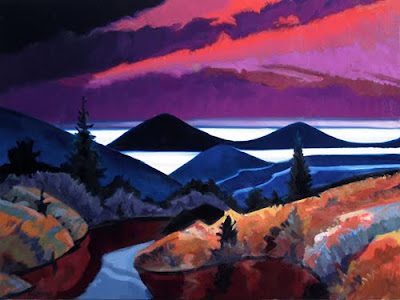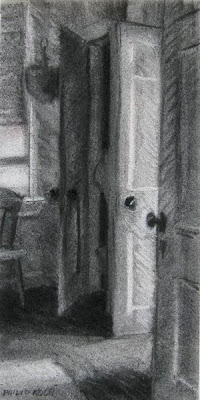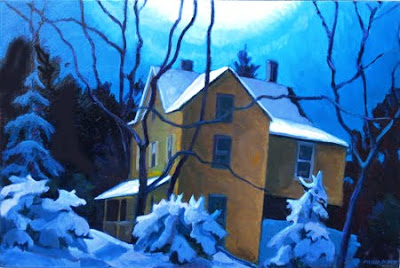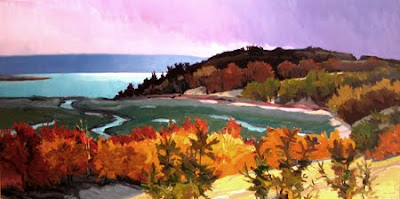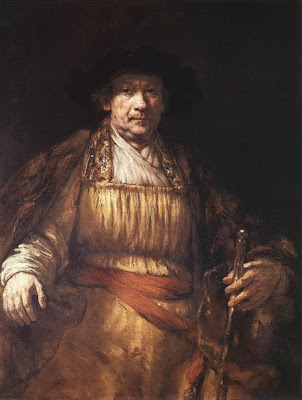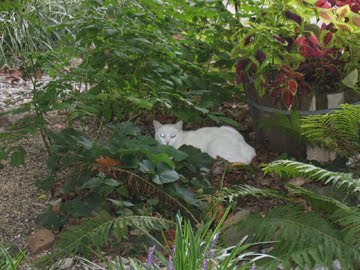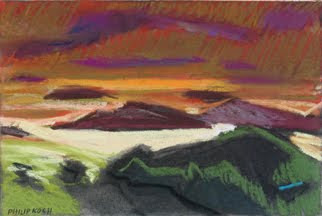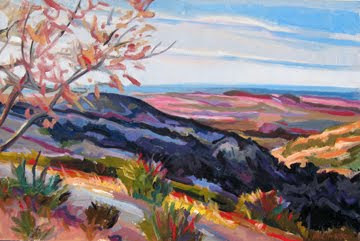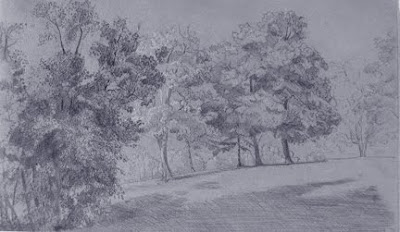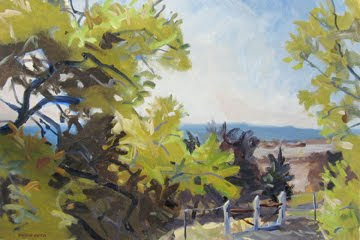Artist Avoids Being Trampled by Herds of Angry Moose
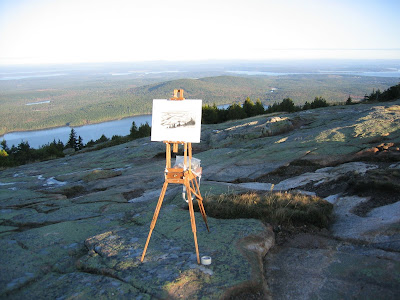
This is my easel at 7:30 this morning atop Cadillac Mountain in Acadia National Park in Maine. As you can see the place is deserted. Funny thing about that is just a half hour before there were probably a hundred people there in the space of five minutes. All of them were there with cameras to snap a photo of the sunrise and then take off again. It was amazing in its spectacle (not the sunrise, the speed people were traveling). I'll have some more to say about this tomorrow, but right now I'm tired after a long day of traveling (including perhaps the fastest run through of the Farnsworth Art Museum in Rockland, ME in recorded history). Suffice it to say the painting trip was great- lots of good weather and strong new work resulted. I'm back home and need to call it a night. Will post some more images tomorrow.
